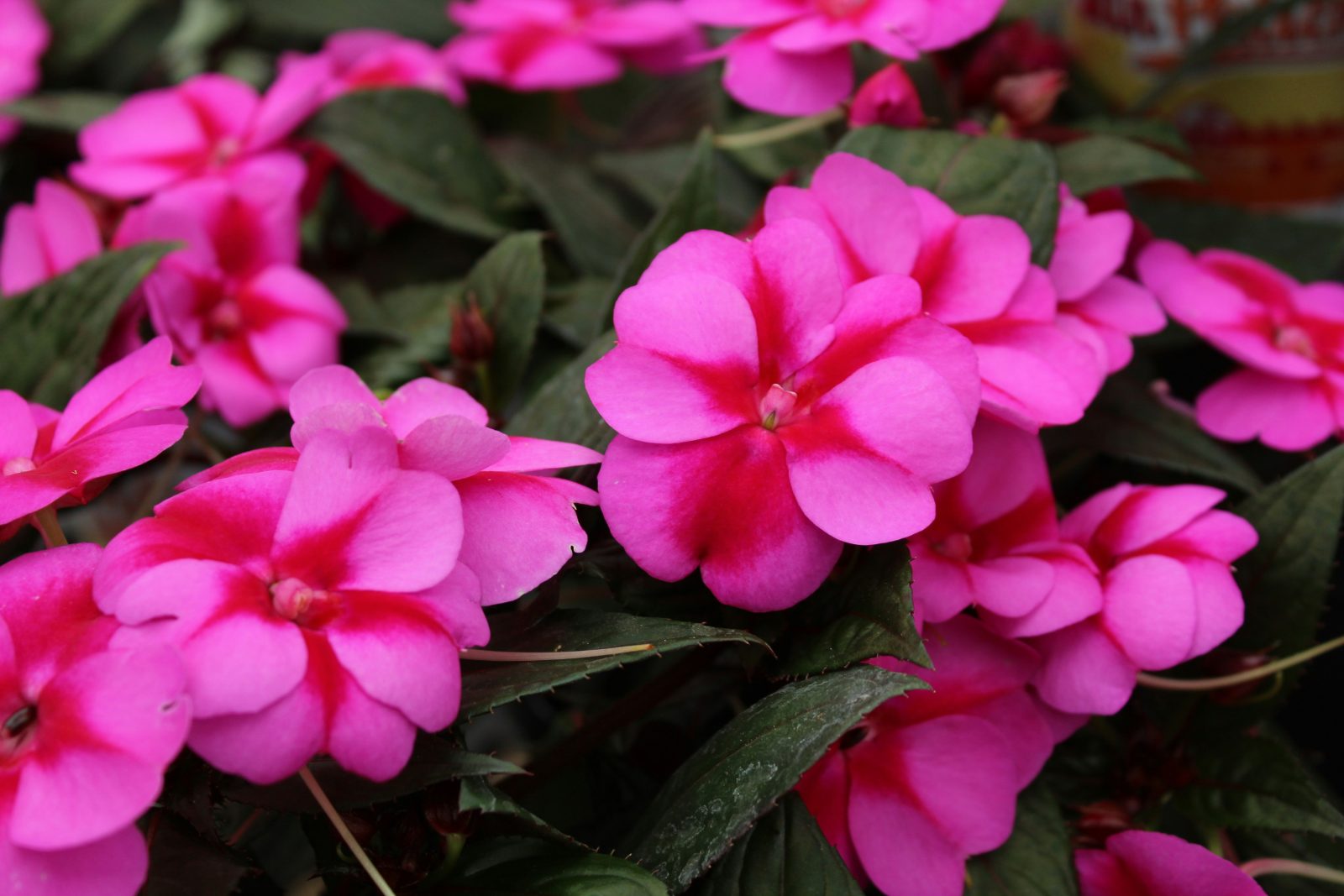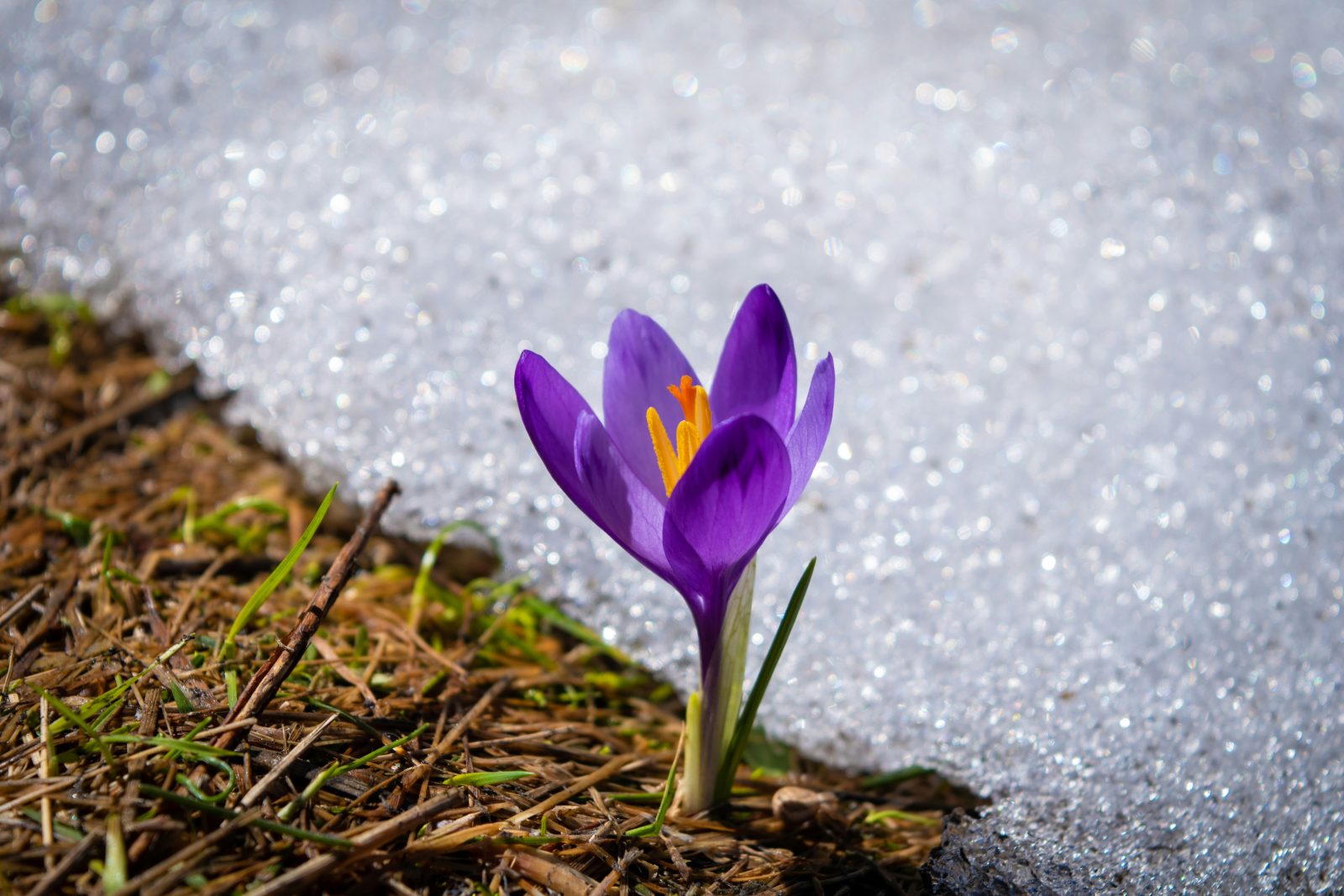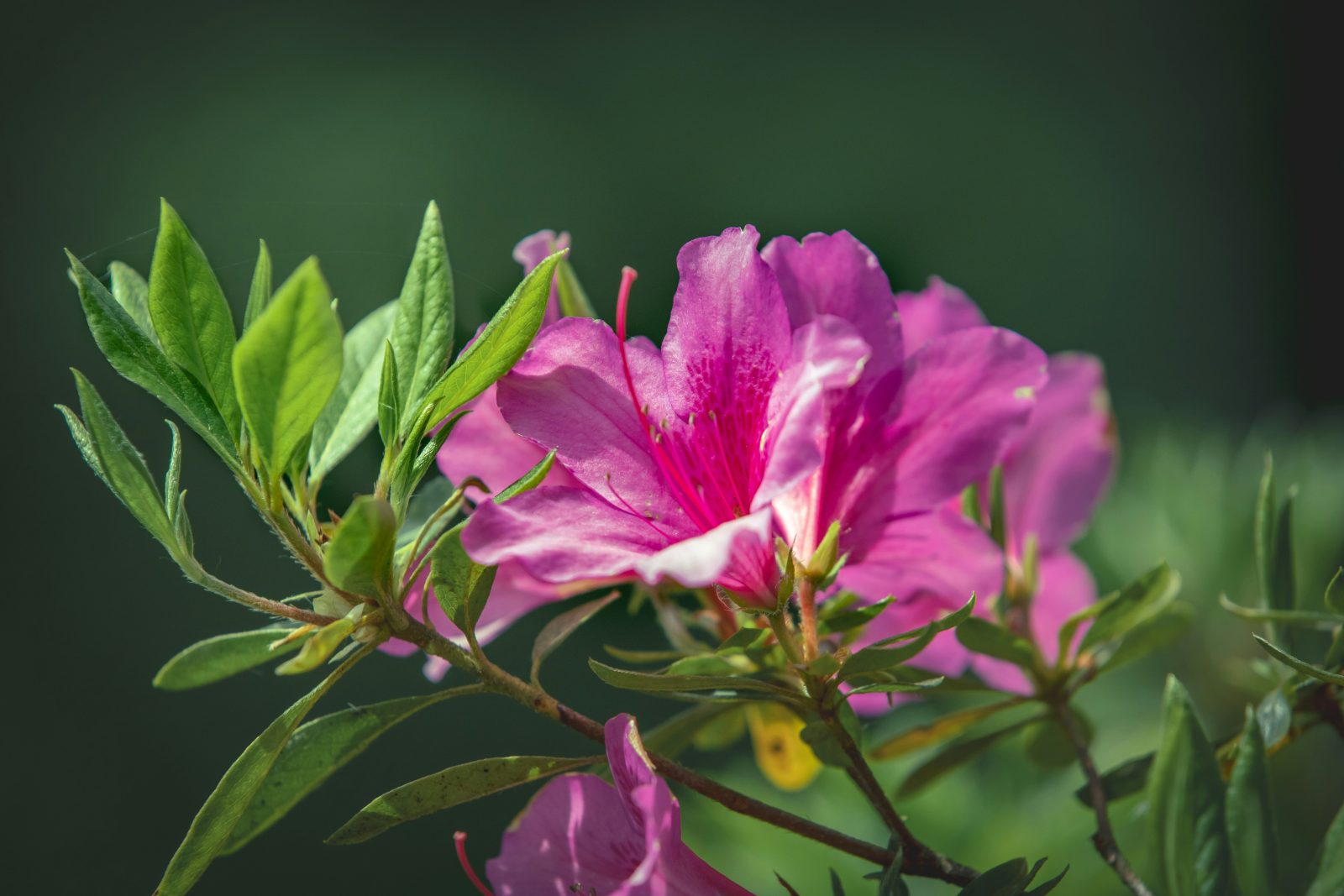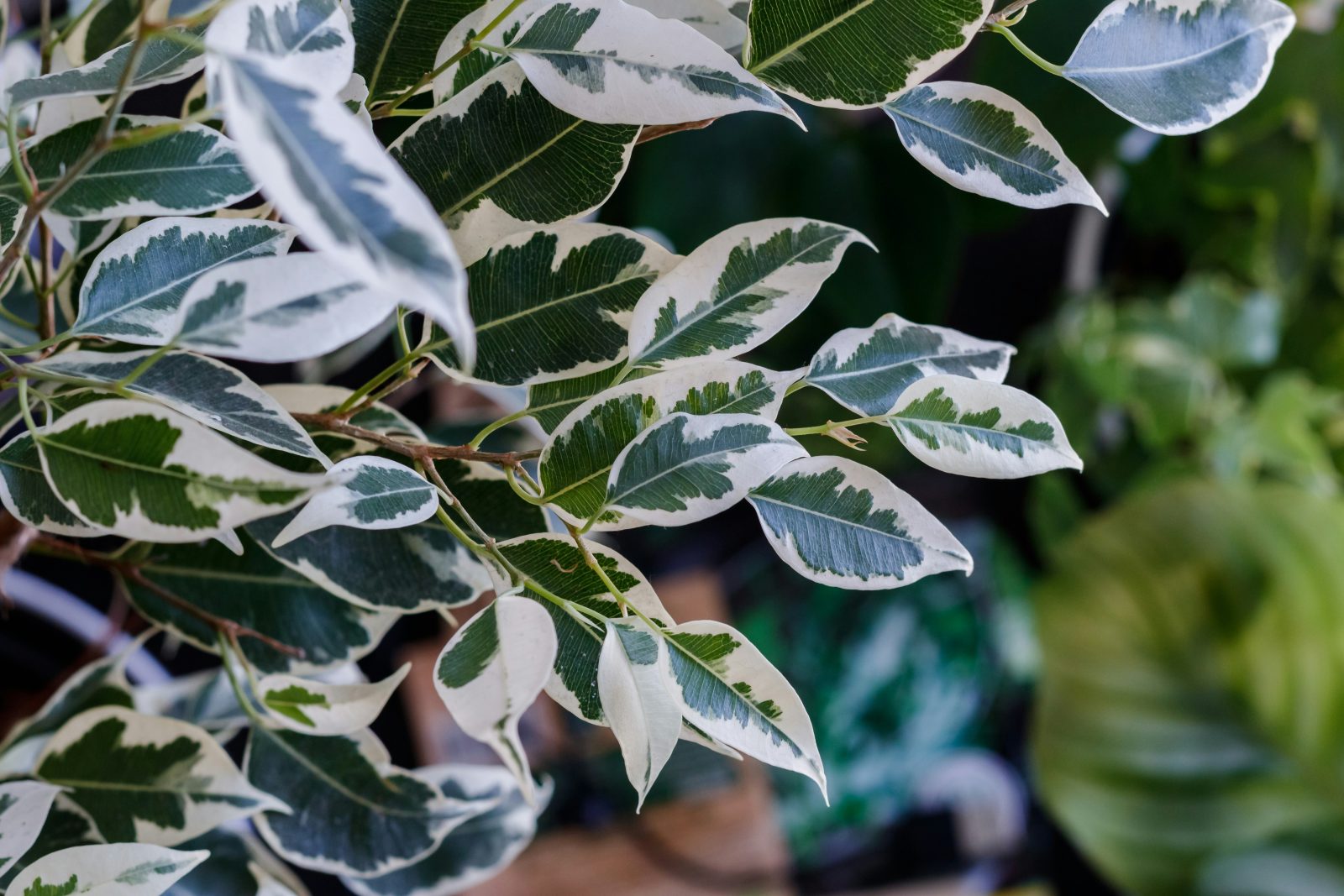Meet the National Garden Bureau’s “Year Of” Plants for 2026! 🌸🌶️
Have you ever stood in the nursery aisle feeling totally overwhelmed by choices? Do you have a Pinterest board full of inspiration but not sure how to narrow it down? Well, the National Garden Bureau (NGB) just gave us the ultimate planting list for a little inspiration. They recently announced their official “Year Of” selections for 2026, and it’s a super helpful list covering everything from shade lovers to spicy edibles.
The NGB picks a handful of plants each year across six major categories—annuals, edibles, bulbs, perennials, shrubs, and houseplants—to shine a spotlight on, giving us all permission to become experts on these specific beauties. I don’t know about you, but it’s nice to find these lists for a little nudge to get the ball rolling on a planning sesh.
The 2026 “Year Of” Plant Lineup
Annual | Impatiens
The ultimate shade brighteners, characterized by dense mounds of lush green foliage completely smothered in vibrant, cheerful flowers. They create a beautiful splash of color—often in shades of pink, red, white, or orange—that looks soft and slightly tropical, instantly lifting a dark corner of the garden or porch.

| Stage | Tip & Maintenance | Variety Examples |
| Seed/Planting | Start seeds indoors 8–10 weeks before the last frost. Plant seedlings outside after all danger of frost is gone. Impatiens are strictly shade plants—avoid direct, hot afternoon sun. | New Guinea Impatiens: Larger flowers, more tolerant of sun (but still prefer shade). Busy Lizzie (Walleriana): Classic, dense, heavy blooming. Interspecific Hybrids (e.g., Beacon series): Bred for disease resistance. |
| Maintenance | Water Hog Alert: Never let the soil dry out, especially in containers! Water constantly. Feed every 2–3 weeks with a balanced liquid fertilizer to support non-stop blooming. | |
| Harvest/End of Season | No harvest, but pinch or cut back leggy stems early in the season to encourage a bushier, fuller plant. They will die with the first hard frost. |
Edible | Hot Pepper
Beautiful and functional. It boasts dark green, often glossy leaves, creating a handsome backdrop for its true stars: the fruit. The peppers themselves offer stunning visual drama as they ripen, transitioning from deep green to brilliant reds, oranges, or yellows, often hanging in decorative clusters that look like edible jewels.

| Stage | Tip & Maintenance | Variety Examples |
| Seed/Planting | Start seeds indoors 8–10 weeks before the last frost, as peppers need a long growing season. Use a heat mat to improve germination. Plant in full sun (at least 6-8 hours). | Mild: Jalapeño (for slicing/stuffing). Medium: Cayenne (for drying/powder). Hot/Super-Hot: Habanero, Ghost Pepper (Bhut Jolokia), or Carolina Reaper. |
| Maintenance | Water regularly, keeping the soil evenly moist but not soggy. Fertilize lightly after fruits begin to set. They love heat! If nights get cool, cover them. | |
| Harvest/End of Season | Peppers can be harvested when green (less heat) or fully red/yellow/orange (more heat/flavor). Use shears or a sharp knife to cut the stem, avoiding tearing the plant. |
Perennial | Sedum
Sedum, particularly the upright varieties like ‘Autumn Joy’, are defined by their incredibly robust, succulent leaves and strong, architectural structure. They offer dense texture throughout the summer before erupting in flat-topped flower clusters late in the season, which start pale pink or green and deepen to a rich russet or deep red, providing vital color well into the fall.

| Stage | Tip & Maintenance | Variety Examples |
| Seed/Planting | Sedum is easiest to start from cuttings or purchased plants. Plant in full sun and well-draining soil. These are succulents—they hate wet feet! | Tall/Upright: ‘Autumn Joy’ (famous for late-season pink/red blooms). Creeping/Groundcover: ‘Dragon’s Blood’ (red foliage). ‘Lemon Ball’ (chartreuse foliage). |
| Maintenance | Minimal watering required, especially once established. They thrive on neglect! No need to fertilize unless your soil is extremely poor. | |
| Harvest/End of Season | Leave the dried flower heads standing over winter for interest (and to feed birds). Cut back hard (down to 1-2 inches) in early spring before new growth starts. |
Bulb | Crocus
The Crocus offers pure, compact joy after a long winter. These small, cup-shaped flowers are often the first sign of life in the garden, bursting forth close to the ground on slender stems. They appear in delicate, saturated colors—purples, yellows, and stripes—providing a striking, low-level carpet of color that is synonymous with the first, tentative days of spring.

| Stage | Tip & Maintenance | Variety Examples |
| Seed/Planting | Plant bulbs in the fall (Sept-Nov) before the ground freezes. Plant pointy side up, about 3 inches deep. Choose a sunny or part-shady spot that drains well. | Giant Dutch Crocus: Larger blooms, appear later. Species Crocus (Snow Crocus): Smaller, first to bloom, great for naturalizing lawns. |
| Maintenance | Very little maintenance. They bloom very early, often while snow is still on the ground! Do not cut the leaves back until they have turned completely yellow and faded (this feeds the bulb for next year). | |
| Harvest/End of Season | No harvest, but they will naturalize (spread and multiply) over time if left undisturbed. |
Shrub | Azalea
Azaleas are prized for their spectacular, dense spring display, transforming into massive balls of color. The shrubs are usually medium-sized and densely branched, but their foliage is completely overshadowed by a profusion of showy, often funnel-shaped flowers. They come in intense, vibrant shades of pink, red, white, or purple, making them a breathtaking focal point in any landscape.

| Stage | Tip & Maintenance | Variety Examples |
| Seed/Planting | Purchase potted plants and plant in spring or fall. Choose a site with partial shade (they need protection from harsh afternoon sun). They require acidic soil, so amend with pine needles or peat moss if needed. | Deciduous: Drop their leaves in winter, offer great fall color. Evergreen: Keep their leaves year-round (often hardier). Kurume: Dense, compact, heavy-flowering type. |
| Maintenance | Keep the soil consistently moist, especially during hot weather, but ensure it’s not soggy. Fertilize lightly right after they finish blooming. Prune immediately after flowering; pruning later will cut off next year’s buds. | |
| Harvest/End of Season | Enjoy the stunning spring flower display! Pruning is the only ‘harvest’ needed to maintain shape. |
Houseplant | Ficus
Ficus offers elegant structure and height, often serving as a dramatic statement piece indoors. Varieties range from the classic Weeping Fig (F. benjamina), known for its delicate, arching branches and small leaves, to the trendy Fiddle Leaf Fig (F. lyrata), which features huge, dark green, violin-shaped leaves that give it a sculptural, modern, and very commanding presence.

| Stage | Tip & Maintenance | Variety Examples |
| Seed/Planting | Typically purchased as a potted plant. Place in a spot with bright, indirect light. They hate being moved, so find a spot and leave it there! | Ficus lyrata (Fiddle Leaf Fig): Large, dramatic leaves. Ficus benjamina (Weeping Fig): Popular for braided trunks and small leaves. Ficus elastica (Rubber Tree): Thick, waxy leaves, easier to care for. |
| Maintenance | Allow the top 2 inches of soil to dry out between waterings. They can be sensitive to overwatering. Wipe the leaves occasionally to keep them dust-free and maximize light absorption. | |
| Harvest/End of Season | No harvest. If you notice a leaf drop, it’s usually due to a sudden change in temperature, light, or being moved. |
To dive deeper into the full selection details and read about the NGB’s reasoning for each choice, find the original article here: National Garden Bureau 2026 Plants
CONNECT WITH US
Thank you so much for supporting our podcast and for making the world a more planty place. Please subscribe, leave a rating or review and listen in for new gardening discussions every week! Golden Acre Home & Garden is located in Calgary, Alberta, Canada and open 362 a year for all your home and garden needs!
Instagram | thehelpfulgardenerspod
Leave us a Voice Note: www.goldenacre.ca/podcast
CREDITS
Hosted by: Brandi Warren & Colin Hayles
Voiceover by: Kaelan Shimp
Music by: Forestmusic

